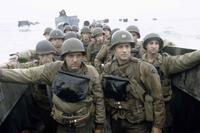Thomas Jefferson, secretary of state in 1794, was eagerly awaiting a meeting with French physician and botanist Joseph Dombey. The Frenchman was supposed to meet Jefferson in Philadelphia to discuss a couple of critical international trade issues between their governments.
He was also going to revolutionize the way Americans did business.
But instead of meeting Jefferson in Philadelphia, Dombey found himself in the Caribbean, where his ship was being boarded by British privateers. Upon learning he was a Frenchman, and a famous scientist at that, he was captured and taken prisoner.
The metric system would have to wait.
At the time, the United States was enjoying its newly won freedom and the closeness that French assistance in the Revolution had brought to the two countries. Meanwhile, Napoleonic France was at war with England and a number of other countries in the War of the First Coalition. So Dombey had to cross the Atlantic with a bit of deftness and luck. He had neither.

Despite its ongoing war with Europe’s monarchies, few admired the French ways of life and business more than Jefferson. One of the French ways he was trying to get the new Congress to adopt was the metric system of weights and measures. As secretary of state, he wanted to standardize the way the entire country measured everything.
Upon winning independence, the former colonies still held some of their mother country’s old customs, including its weights and measures. The British system was filled with holdovers from a history of more than a thousand years. It still used Anglo-Saxon measurements, Roman measurements and other systems from the times of King Henry VII and Queen Elizabeth I.
This meant that instead of an understandable and scalable base-10 system that could be converted easily, it used depth measurements like a fathom, the arm span of a human from fingertip to fingertip. In terms of distance, one measure was a league, which was about an hour’s worth of travel. In volume, a pint was two gills or four jacks, depending on the tools at your disposal.
When it came to weights, a stone was about 14 pounds, but a hundredweight was about eight stone. You get the idea: It could be confusing.
If that wasn’t bad enough, different regions throughout the U.S. used different systems. For example, New England used the English system while next door in New York, they were using a Dutch system.
Jefferson didn’t think much of any of these systems, instead favoring the French metric system, especially for science and economics. The bevy of different weights and measures made commerce difficult both inside and outside the country, so standardizing measurements to match America’s closest ally was just good business. That’s why he sought a meeting with Dombey.
Dombey was bringing with him a cylindrical, one-kilogram copper weight (called a grave) that Jefferson was going to use as the basis for the new American system of weights. He also was bringing a copper rod that measured one meter to be the basis of a system of measurements. But on the way across the Atlantic, a storm forced his ship south into the Caribbean, where privateers lay in wait.

A privateer isn’t exactly a pirate ship, except that it’s pretty much a pirate ship. Fighting ships could be issued a kind of piracy hall pass, called a letter of marque, by one government to raid the shipping of a government with which they were at war. Since France was at war with England, Dombey’s ship was fair game for the British privateers. Two privateers descended on his ship and boarded it. Dombey tried to hide among the Spanish crew but was quickly discovered and captured.
The famous French scientist died in captivity that year. America’s hopes for using the metric system died with him. The U.S. continued using its standard but converted to a reformed British Imperial system in 1824. Since then, the United States has tried -- many times -- to force a conversion to the metric system.
In 1875, the U.S. joined an international body to maintain metric standards. The 1893 Mendenhall Order adopted the metric system in the United States. The Metric Conversion Act designated the metric system as the measurements for American trade and commerce. Later legislation also tried to push America toward the metric system, like the Omnibus Foreign Trade and Competitiveness Act of 1988, the Savings in Construction Act of 1996 and the Department of Energy High-End Computing Revitalization Act of 2004.
And yet, we still measure distance in miles, gasoline by the gallon and hamburgers by the quarter pound.
Want to Know More About the Military?
Be sure to get the latest news about the U.S. military, as well as critical info about how to join and all the benefits of service. Subscribe to Military.com and receive customized updates delivered straight to your inbox.
















